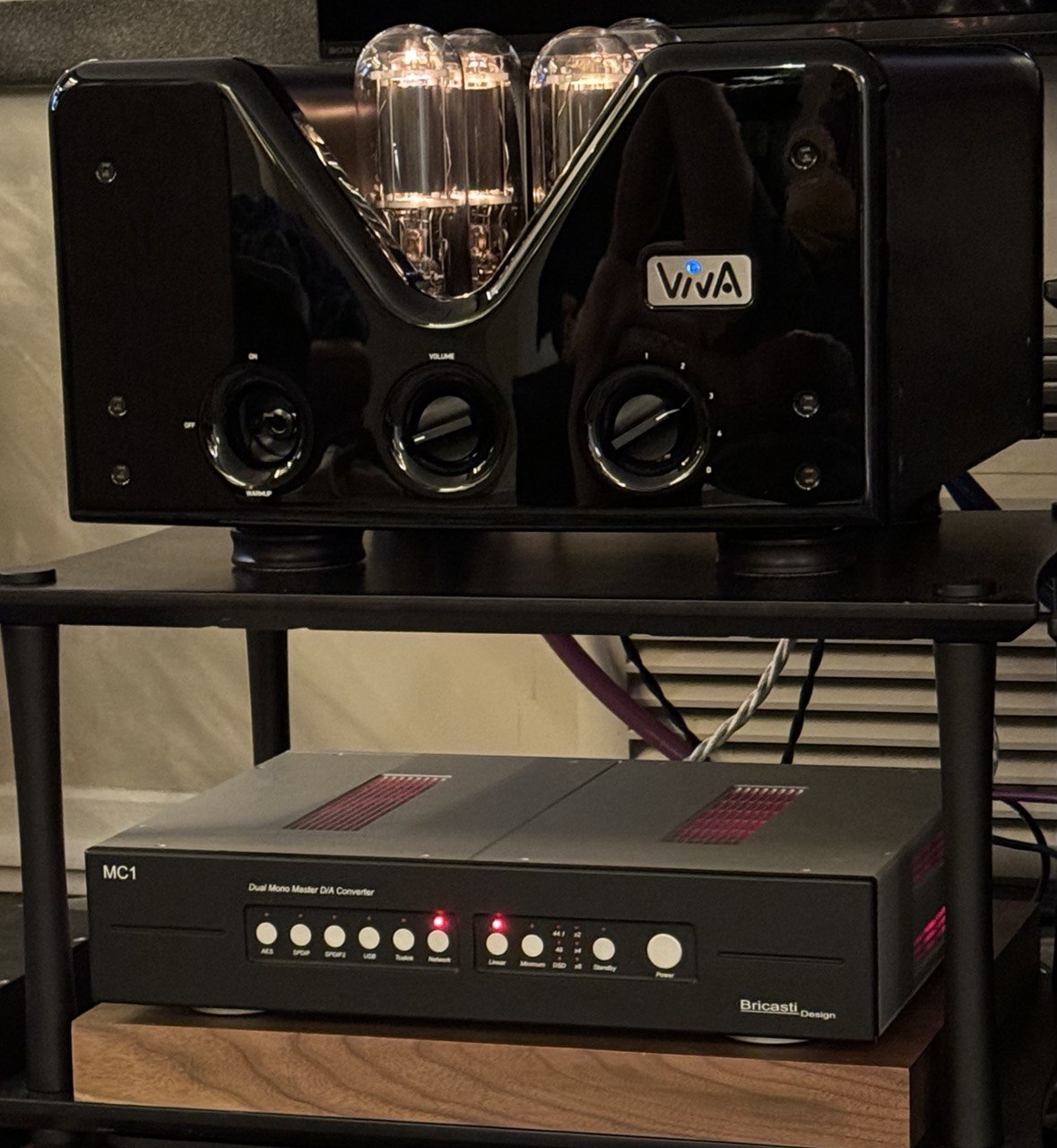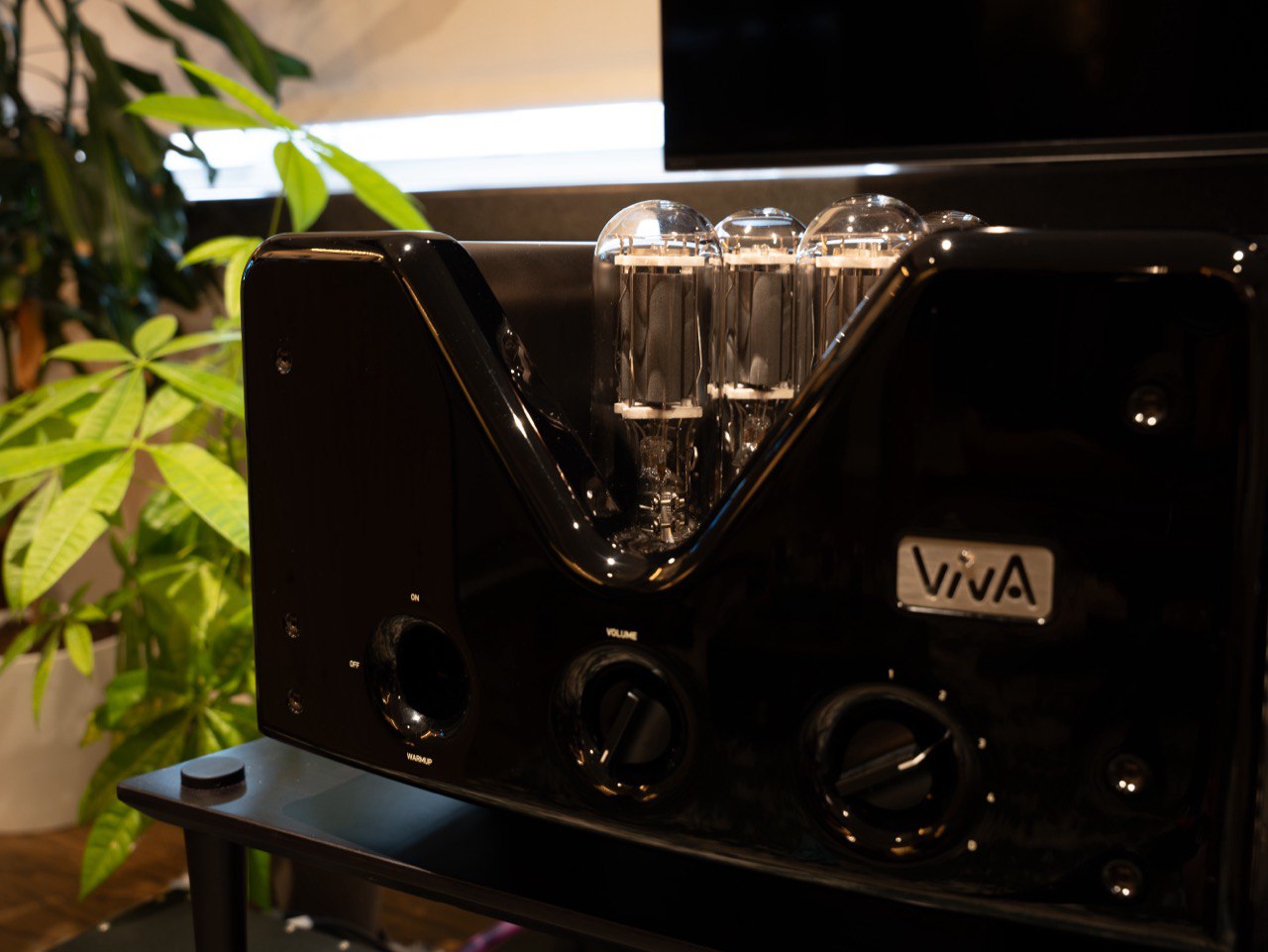It seems to be a theme of digital lately filtering through my space. This is really more of an observation than a complaint in the slightest. I think sometimes digital can take a bit of a back seat to the more provocative nature of amplifiers and speakers. A lot of people seem more content focusing on the upstream aspects than what is really the brain of the rest of the system. It’s been great to watch the market begin to shift a bit with technology and have more affordable really great digital sources.
This is a second entry for review from a company with their feet firmly rooted in the pro audio world with an echo into the world of audiophiles. While the last review of the Meitner MA3 was decidedly the audiophile portion of that, the Bricasti MC1 is actually aimed at pro audio. The MC1 might not be as well known in these circles as some of Bricasti’s other offerings (the M1 on the consumer side and the famous M7 reverb), but it shares a lot of the same heritage. While each product has gone through a few revisions, despite the name not changing, it’s nice to see they offer upgrades for existing users to keep their units up to date. Thanks to a friend I was able to spend a good bit of quality time with this unit amongst my other gear which included the SW1X VDT IV as source, Viva Solista and Konus Integrale for amplification (as well as a brief appearance of a First Watt SIT-3), Isotek V5 Aquarius for power conditioning, and Wolf Von Langa Son’s for speakers. I also used Hifiman Susvara and Shangri La Sr, Modhouse Tungsten, and Focal Utopia.
The MC1 looks like it would fit well with the pro audio world. All buttons are quite accessible on the front and to the left of the power and standby buttons are lights to indicate the sample rate. The MC1’s internal layout is primarily dual-mono, with separate components for each channel. It has individual toroidal AC transformers for power, and quite a bit of voltage regulation. Each channel has its own DAC chip which in this case is an Analog Devices AD1955 chip. This is a multibit chip which seems to be gaining popularity with a number of new releases lately. The analog signal is further processed by op-amps and discrete-transistor output buffers, with both balanced and unbalanced outputs.

On the outside it has a robust amount of inputs including AES, COAX, Optical, and USB. It's worth mentioning this unit also has the optional ethernet module, so I was able to test that as well. I first started by testing the input options. I used the new SW1X VDT IV, WiiM Pro, and USB from a Raspberry Pi. I compared these against each other as well as against the optional ethernet input. Ultimately, I preferred either using COAX from the VDT IV or the ethernet input on the MC1. The ethernet was incredibly competent as a standalone. I think it performed higher than either the Wiim Pro or the USB from the Raspberry pi. The only thing I thought that beat it was using the VDT IV as source. For the rest of the review I switched between these two but mostly used the VDT IV.

Internally it’s equally as impressive with clearly defined sections for each board. It's really nice to see the level of care and organization that went into the internals. You can see where the term “dual mono” comes into play with the totally separate output boards with separate power supplies.
I started with the MC1 taking residence in my system for a few days before ever switching anything back in or out. I wanted to live with it a bit and get used to what it brought before moving things around. I’ve owned a couple other pro audio targeted products and the one thing I couldn’t get past was how fatiguing some of them could be. This was the first thing that I noticed during this time was how non fatiguing the MC1 really is. Which actually makes a lot of sense for those in the pro audio world, you would want something to be non-fatiguing if you’re sitting there listening to it all day. I think overall the general character of the MC1 leans slightly warm of neutral and is fairly accurate in the rest of its reproduction.
A recording that really struck me with this DAC was New Age Blues by Cam Cole. There’s always those songs or albums you find you absolutely love despite the recording. This one fits that in particular. The recording itself can sound a bit harsh on some DACs. The MC1 handled this in a way that felt like some of that harshness wasn’t quite so present without feeling like it was removing anything. The MC1 doesn’t shy away from showing flaws in songs and you can tell the recording still isn’t top notch. It doesn’t gloss it over but merely presents it in a way that makes it more listenable.
After this I wanted to see how it did with older recordings. Ishoku-Sokuhatsu by Yonin Bayashi is another one of my favorites and a great recording for its time. From the start of this album, the detail of the DAC was incredibly apparent. It does a great job picking up low level information. Especially on Omatsuri you can hear some of the information about the room during the quieter parts. Imaging is very precise and I can pick out each separate instrument within the stage. Within that stage is where things get a bit interesting. I feel like it does a decent job with staging to the front. It's not overly deep but still roomy. The staging to the either side of the center feels like it narrows in a bit. Instead of being uniform it sort of draws in. In the middle of Omatsuri where the sound of the guitar pans from side to side it's pretty easy to pick up. Similarly the depth was a bit better to the front than to the sides.
Switching paces a bit with Powa by tUnE-yArDs. She has a really neat singing style and range that’s hard for a lot of DACs to nail but I feel like the MC1 gets it right. Her voice is presented with enough detail that you can hear the little fluctuations she’s making throughout the song. The detail and timbre of her voice from the MC1 really make the recording come to life. I can also pin point where everything is in space quite well.
Overall, the MC1 does a good job at straddling a lot of categories. It’s able to walk a fine line between very detailed and revealing while never being offensive or harsh. It has great dynamics and technicalities. The mostly neutral signature lends itself well to pairing with a lot of different amps which can help address some of the issues with staging as well. This would be a great recommendation for anyone looking for a reference style tuning with a touch of warmth.



Leave a comment
All comments are moderated before being published.
This site is protected by reCAPTCHA and the Google Privacy Policy and Terms of Service apply.